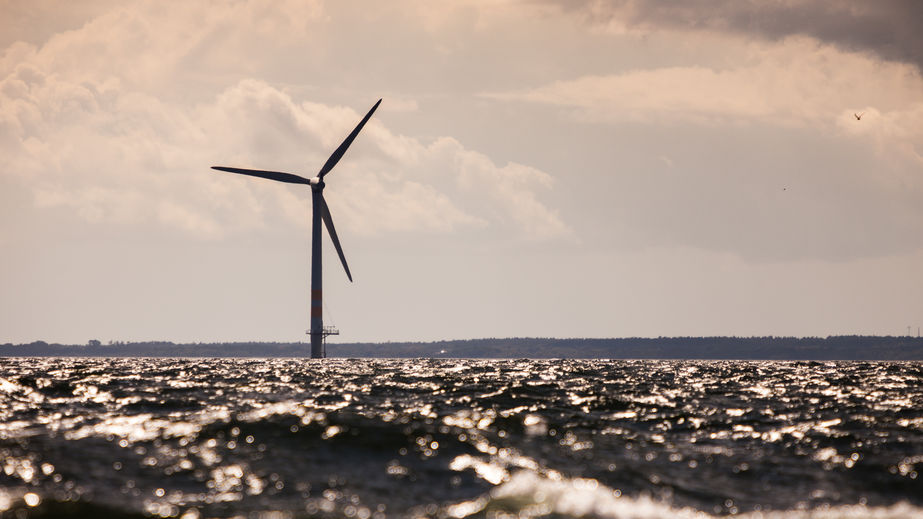As reported in an earlier article, Virginia’s green electric power plan calls for 5,000 MW of offshore wind generating capacity to be built in the next decade or so. This is a huge amount given that the worldwide total is just around 15,000 MW. We are talking about something like 800 giant windmills, embedded in the ocean floor and sticking hundreds of feet into the air above the water. They will be on the order of one and a half times taller than the Washington Monument, which is really tall.
Two features make this offshore wind plan a folly — too little wind and too much wind. Let’s look at too little wind first.
The proposed site is around 30 miles offshore of the giant Norfolk naval complex. Sites are usually much closer in than this, but maybe the Navy told them to keep their distance. Or perhaps they are out beyond the very busy shipping lanes. Every ship from Central and South America, or the southeast U.S., headed for ports from Baltimore north to Canada, passes through this area. This in itself is a concern but not one we are looking at now.
The problem is that this area frequently gets periods of a week or more when the wind is too low to generate any power. These are winds of 10 mph or less. Normal wind turbines require sustained wind of 33 mph or more to generate full power. Some new models with giant blades can do full power at just 23 mph. But neither generates much of anything at 10 mph. It is not a matter of no wind; low wind is enough.
Weather records for Norfolk show just such an event last year, with the low wind period being August 17-23. The wind never measured over 10 mph for the entire 7 days.
To make matters worse, when these low wind periods occur in summer they often include very high temperatures. In the event cited above the high temperatures were in the upper 80’s and low 90’s. Away from the ocean, temperatures were even higher. Both Richmond and Washington DC saw high temperatures in the mid to upper 90’s for most of this week long period.
These high temperatures create the greatest need for electricity, called peak demand. Combining peak demand with no wind power means this huge, expensive wind facility does nothing when electricity is most needed. Some other form of power generation will have to be standing by to do what the 5,000 MW of useless offshore wind power cannot do.
There is no provision for this duplication of generating capacity in the Virginia plan. If it is not there when needed, then a prolonged blackout is the only option.
Week long periods of no generation low wind occur fairly often in the Norfolk area, perhaps once every few years. In a hot summer they may occur more than once. But there are also many shorter periods of low wind, with a high need for electricity, that occur more frequently. Then too there are no doubt longer periods of low wind that occur less frequently. At the one in fifty year frequency we might get a month or more of low wind. I see no evidence that these possibilities have been addressed in the Virginia plan.
On the high wind side we have hurricanes.
This area could be called hurricane alley because many storms turn north in the Caribbean and run up the American coast. Southern Virginia and northern North Carolina actually stick out into this flow. That is where these tall towers will be.
Category five hurricanes have sustained winds over 156 mph with gusts that can exceed 200 mph. To date no offshore wind towers have been designed to withstand these sorts of winds. Most have been built in Europe where hurricanes do not occur. The force of the wind is a function of the square of the wind speed, so a 160 mph wind is four times as destructive as an 80 mph wind.
In fact the US Energy Department recently announced a new research program to look into whether a hurricane proof design is even possible. Here’s how DOE puts it:
“Although hurricanes and the damage they can cause remain difficult to predict, with current R&D, the Energy Department is taking steps to alleviate potential risks to offshore wind systems that will eventually be deployed in the southeastern and mid-Atlantic regions.“
DOE puts a positive spin on it but it seems clear that we are in no position to build massive hurricane proof offshore wind facilities today. DOE says “eventually” and even that may be wishful thinking.
One thing certain is that if Virginia goes ahead, in effect playing chicken with cat 5 storms, these hundreds of towers will have to be far stronger than standard European designs. Stronger means more expensive. The standard cost is around $1.5 million per MW, which would be $7.5 billion in Virginia’s case. If hurricane proofing doubles the cost that puts a monstrous $15 billion at risk of destruction.
Conclusion: The Virginia plan is calling for a massive and incredibly expensive offshore wind generating facility, at high risk of failure, that will produce no power whatever when it is needed most.
Surely this is folly.
